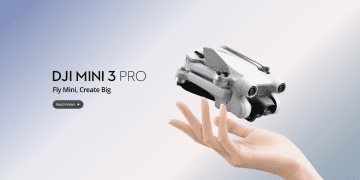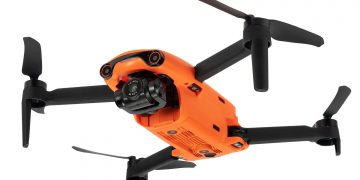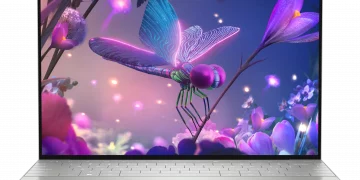Defining Drones
Drones, or unmanned airborne vehicles (UAVs), at their core, represent the pinnacle of modern drone ethics and autonomous technology. They can range from small, handheld devices for personal entertainment to larger, more sophisticated machines designed for specific commercial or military tasks. Their autonomy level varies: some require constant human control, while others can execute complex tasks with minimal human intervention. This wide range of capabilities not only makes drones versatile but also introduces a myriad of ethical considerations. As these machines become more integrated into our daily lives and operations, the lines of accountability blur. As we grant drones more autonomy, we must ask: at what point does human responsibility for a drone’s actions begin and end? And how do we navigate the challenges that arise from these blurred boundaries?
Invasion of Privacy: The Unseen Eyes in the Sky
The advent of drones has brought unparalleled conveniences and innovations, but it has also ushered in a new era of privacy concerns. These concerns aren’t just theoretical; real-life situations, as highlighted in the articles provided, underscore the pressing need to address the potential misuse of drone technology.
Aerial Surveillance
Drones, equipped with advanced cameras, can capture detailed images from significant distances. In recreational contexts, drones flown in public spaces for photography or as a hobby can inadvertently capture images of individuals without their consent. Consider a scenario where a person is sunbathing in their private backyard, expecting a degree of privacy. A drone, flown by a hobbyist or a photographer in the vicinity, might unintentionally capture images of this individual. Such incidents raise pressing questions: Should there be designated no-fly zones over private properties? How do we balance the rights of drone operators against the rights of individuals who wish to maintain their privacy?
Commercial Exploitations
Beyond recreational use, commercial drones also pose significant privacy threats. For instance, drones used for surveillance around malls or monitoring road traffic can gather vast amounts of data. While the primary intention might be to monitor traffic patterns or ensure security, these drones could inadvertently capture personal data, leading to potential breaches of privacy. The article from csiflabs.cs.ucdavis.edu highlights concerns about civilian and commercial drones being used for purposes like surveillance around malls, monitoring road traffic, and even oil, gas, and mineral exploration. Such extensive data collection can lead to unintentional spying or data breaches.
The Thin Line of Ethics
Taking the discussion further, there’s a thin line between legitimate surveillance and invasion of privacy. For instance, while a drone capturing traffic patterns might be seen as harmless, the same drone capturing personal moments—like a family gathering in a backyard—can be deeply intrusive. Scenarios where drones flown in parks for photography might inadvertently capture images of individuals, leading to potential privacy invasions. More alarmingly, drones can be used with malicious intent, such as stalking, leading to clear ethical and legal violations.
Legal Ambiguities
The rapid evolution of drone technology has outpaced the development of comprehensive legal frameworks to address privacy concerns. While some jurisdictions have implemented no-fly zones for drones near sensitive areas, rules regarding drone flights over private properties or public spaces remain ambiguous. The lack of clear regulations means that individuals often have limited recourse in cases of privacy invasion.
The real-life situations highlighted in the provided articles underscore the pressing need to address the potential misuse of drone technology. As drones become more integrated into our daily lives, striking a balance between innovation and privacy will be paramount. Establishing clear legal and ethical guidelines will be crucial to ensure that the skies don’t become the Wild West, where the right to privacy is constantly under threat.
Commercial Drones and Data Collection
Navigating the New Frontiers of Privacy
The commercial sector has embraced drones with open arms, recognizing their potential to revolutionize industries ranging from agriculture to logistics. However, as these unmanned aerial vehicles soar into the skies, they also dive deep into the realm of data collection, raising significant concerns about privacy, data security, and the potential misuse of information.
The Rise of Commercial Drones
Commercial drones have found applications in a myriad of sectors. In agriculture, they monitor crop health, soil conditions, and irrigation levels, providing farmers with real-time data to optimize yields. In logistics, companies are experimenting with drone deliveries, promising to reduce delivery times drastically. Real estate agents use drones to capture aerial views of properties, while energy companies deploy them to inspect infrastructure like pipelines and power lines. With each flight, these drones collect vast amounts of data, painting a detailed picture of our world from above.
The Data Deluge
The primary allure of commercial drones lies in their ability to gather data efficiently. A single drone flight can capture high-resolution images of vast areas, monitor temperature variations, detect changes in vegetation, and even track the movement of vehicles and people. This data, when processed and analyzed, offers invaluable insights. For instance, a drone monitoring traffic patterns can help city planners design better road networks, while drones in agriculture can detect pest infestations early, saving crops.
Privacy Concerns
However, this extensive data collection capability is a double-edged sword. While a drone capturing traffic patterns is seen as beneficial, the same drone can inadvertently capture personal data. Imagine a scenario where a drone, deployed to monitor traffic, captures images of individuals entering a medical facility, potentially revealing sensitive health information. Or consider a real estate drone capturing images of a private family gathering in a backyard. These scenarios underscore the thin line between legitimate data collection and unintentional privacy invasion.
Data Security and Misuse
Beyond privacy concerns, there’s the issue of data security. As drones collect vast amounts of data, questions arise about how this data is stored, who has access to it, and how it’s protected from breaches. In an era where data is a valuable commodity, the potential for misuse is significant. Unscrupulous entities might use drone-captured data for targeted advertising, corporate espionage, or even blackmail.
Regulatory Challenges
The rapid adoption of commercial drones has outpaced the development of comprehensive regulations governing data collection. While some jurisdictions have implemented guidelines for drone operations, few address the nuances of data privacy and security comprehensively. This regulatory vacuum leaves businesses and individuals in a grey zone, uncertain about their rights and responsibilities.
Commercial drones, with their unparalleled data collection capabilities, offer immense potential benefits. However, as they weave into the fabric of our industries, it’s crucial to address the associated privacy and security challenges. Balancing the benefits of drone-driven data insights with the ethical implications of data collection will be key to harnessing the full potential of commercial drones responsibly.
Military Drones in Modern Warfare: Balancing Tactical Advantages with Ethical Dilemmas
Unmanned combat aerial vehicles (UCAVs), commonly known as combat drones or simply drones, have become an integral part of modern warfare. These drones are primarily used for intelligence, surveillance, target acquisition, and reconnaissance. They are equipped to carry ordnance such as missiles, ATGMs, and bombs for drone strikes. Unlike traditional manned aircraft, these drones are remotely controlled, often with varying levels of autonomy.
Real-life Cases of Military Drone Usage
- Historical Context: The concept of combat drones dates back to the 1940s. However, the modern military drone, as we know it, was developed in the early 1970s. During the 1973 Yom Kippur War, Israel utilized unarmed U.S. drones to deplete Egypt’s anti-aircraft missiles without risking their pilots. This strategy was highly effective, leading to the widespread adoption of drones in subsequent conflicts.
- U.S. Drone Strikes: The U.S. has significantly increased its use of drone strikes against targets in various countries as part of its War on Terror. By January 2014, it was estimated that U.S. drone strikes had resulted in the deaths of 2,400 people over five years. By June 2015, this number had risen to over 6,000.
- Drones in Recent Conflicts:
- In 2020, Turkey became the first country to deploy UCAVs in a large, coordinated attack on a conventional battlefield in Syria.
- Drones played a pivotal role in the 2020 Nagorno-Karabakh war between Azerbaijan and Armenia. Azerbaijan’s use of cost-effective drones was a significant factor in their victory against Armenian forces.
- The 2022 Russian invasion of Ukraine also saw extensive drone usage. Drones have provided a cost advantage in modern warfare, allowing for the destruction of expensive enemy equipment with relatively cheap drone technology.Non-state Actors: Drones have not been limited to state actors. During the Battle of Mosul, it was reported that ISIS used commercially available drones for surveillance and weapon delivery. These drones were adapted to drop grenades and other explosives.
Thought-Provoking Questions/Insights
Ethical Implications: With the increasing use of drones in warfare, what are the ethical implications of remote warfare, especially concerning civilian casualties?
Psychological Impact: How does the remote operation of drones impact the psychology of the operators, especially when they witness the aftermath of their actions in great detail?
As drone technology continues to advance, how will it shape the future of warfare, and what measures can be taken to ensure that their use adheres to international laws and ethical standards?
Unmanned Aerial Vehicle (UAV) Autonomy: Exploring the Ethical and Technological Challenges of Drone Independence
Unmanned Aerial Vehicles (UAVs), commonly known as drones, have evolved significantly over the years. Initially developed for military missions deemed too “dull, dirty, or dangerous” for humans, their roles have expanded to numerous non-military applications, including aerial photography, precision agriculture, environmental monitoring, and more.
One of the most debated aspects of UAVs is their degree of autonomy. The International Civil Aviation Organization (ICAO) classifies uncrewed aircraft as either remotely piloted or fully autonomous. Some UAVs offer intermediate degrees of autonomy, such as a vehicle that may be remotely piloted in most contexts but can autonomously return to base. Flight UAVs can operate under remote control by a human operator, known as remotely piloted aircraft (RPA), or with varying degrees of autonomy, from autopilot assistance to fully autonomous aircraft that have no provision for human intervention.
Insights:
Evolution of Autonomy
The shift from human-operated to fully autonomous drones showcases the rapid advancements in technology. As control systems improve, the debate on how much autonomy should be given to these machines intensifies.
Safety and Regulations
With increased autonomy, there’s a need for stringent safety measures and regulations. How can we ensure that autonomous drones operate safely without human intervention, especially in populated areas?
Ethical Implications
The autonomy debate isn’t just about technology but also ethics. Should machines be given the power to make decisions, especially in military contexts? Where do we draw the line between human control and machine autonomy?
The autonomy debate surrounding UAVs is multifaceted, touching on technological, safety, and ethical concerns. As UAVs become more integrated into our daily lives, addressing these concerns becomes crucial for the future of drone technology.
Legal Implications of Drones: Navigating the Skies of Regulation
The rise of drone technology has brought forth numerous benefits, from enhanced aerial photography to efficient agricultural monitoring. However, as drones soar higher in popularity, they also dive deep into a complex web of legal challenges. These challenges are multifaceted, touching on privacy rights, safety concerns, and international laws. Integrating the best long-tailed keywords, this article delves into the intricate legal implications of drones.
Privacy Concerns – “Are there laws against drones?”
One of the most pressing legal issues with drones is the potential invasion of privacy. As drones equipped with high-resolution cameras become more accessible, concerns about unauthorized surveillance and data collection have surged. Questions arise, such as “Is it legal for someone to fly a drone over my property?” or “What are the limitations of drones when it comes to privacy?”
Safety Regulations – “Drones legal issues”
As drones share airspace with other aircraft, safety becomes paramount. Regulatory bodies worldwide have been grappling with creating comprehensive safety guidelines that address concerns like flight altitudes, no-fly zones, and drone operator certifications.
Commercial use – “Legal issues of delivery drones”
The commercial application of drones, especially in sectors like delivery services, presents its own set of legal challenges. How do regulations ensure that delivery drones don’t infringe on private property rights? What safety measures are in place to prevent accidents?
International Laws – “Legality of drones under international law”
Drones don’t just operate within national borders. Especially in the context of military drones, questions about their legality under international law come to the forefront. How do nations navigate the use of drones in conflict zones, and what international treaties or agreements govern their use?
Ethical warfare – “Legal and ethical implications of drone warfare”
The use of drones in warfare has sparked intense debates about the ethics and legality of remote combat. When drones are used for targeted strikes, who is held accountable for potential civilian casualties? How do international laws address the use of autonomous drones in conflict?
Future of Drone Regulations – “Legal ramifications of drones”
As drone technology continues to evolve, so will the legal landscape. Future regulations will need to address the increasing autonomy of drones, the integration of AI, and the potential for drones to be used in new sectors and applications.
In conclusion, the legal implications of drones present a dynamic and evolving challenge. As technology advances, the legal framework will need to adapt, ensuring that the benefits of drones are harnessed while mitigating potential risks.
Navigating the Future of Drones: Ethical Challenges, Innovative Solutions, and Global Collaborations
The drone industry, with its rapid technological advancements and diverse applications, stands at the precipice of a new era. As we look to the future, the way forward with drones is both promising and fraught with challenges. Integrating the best SEO keywords, this article explores the potential trajectory of the drone industry and the steps needed to ensure its sustainable growth.
Innovative Applications – “Drone technology advancements”
The potential applications of drones are vast and varied. From “smart agriculture” practices that optimize crop yields to “urban air mobility” solutions that promise to decongest city roads, drones are set to redefine multiple sectors. Exploring and investing in these innovative applications will be crucial for the industry’s growth.
Safety First – “Drone safety protocols”
As drones become more integrated into our daily lives, ensuring their safe operation becomes paramount. This means investing in robust “drone safety protocols,” developing advanced collision avoidance systems, and ensuring that drone operators are well-trained and certified.
Ethical Considerations – “Ethical use of drones”
Beyond the technical aspects, the way forward also involves addressing the ethical implications of drone use. This includes ensuring the “ethical use of drones” in warfare, respecting privacy rights in surveillance applications, and promoting transparency in data collection practices.
Regulatory Evolution – “Drone regulation updates”
The legal landscape for drones is still evolving. As the technology advances, there will be a need for regular “drone regulation updates” to address new challenges and ensure that drones operate within a well-defined legal framework.
Environmental Impact – “Eco-friendly drone solutions”
The environmental impact of drones, especially in terms of energy consumption and emissions, cannot be ignored. The industry must work towards developing “eco-friendly drone solutions” that minimize their carbon footprint and promote sustainable practices.
Collaborative Efforts – “Global drone collaborations”
The challenges facing the drone industry are not limited to individual countries or regions. Addressing these challenges requires “global drone collaborations,” where nations, industries, and experts come together to share knowledge, best practices, and innovative solutions.
Public Perception – “Building trust in drone technology”
For drones to truly become an integral part of our future, it’s essential to address public concerns and “build trust in drone technology.” This means engaging with communities, addressing their concerns, and showcasing the positive impact of drones on society.
In conclusion, the way forward with drones is a journey of exploration, innovation, and collaboration. By addressing the technical, ethical, and societal challenges head-on, the drone industry can chart a course towards a future where drones fly high, not just in the skies but also in their positive impact on the world.
International Drone Laws: A Quick Guide
Navigating the world of drone regulations can be complex, especially when considering the laws of different countries. To assist our readers in understanding the diverse legal landscapes, we’ve compiled guides on drone laws for several countries. Explore the links below to delve into the specific regulations of each nation:
UK Drone Laws: Discover the rules and regulations governing drone operations in the United Kingdom. Whether you’re a hobbyist or a commercial operator, our guide provides a comprehensive overview of the UK’s drone legal framework.
USA Drone Laws: Dive into the intricacies of drone regulations in the United States. From FAA guidelines to state-specific rules, our guide covers the essentials of flying drones in the USA.
Australian Drone Laws: Explore the drone laws of Australia, a country with vast landscapes and specific rules for drone operations. Our guide sheds light on the regulations set by the Civil Aviation Safety Authority (CASA) and other relevant bodies.
Stay informed and fly responsibly by familiarizing yourself with the drone laws of your respective country.












